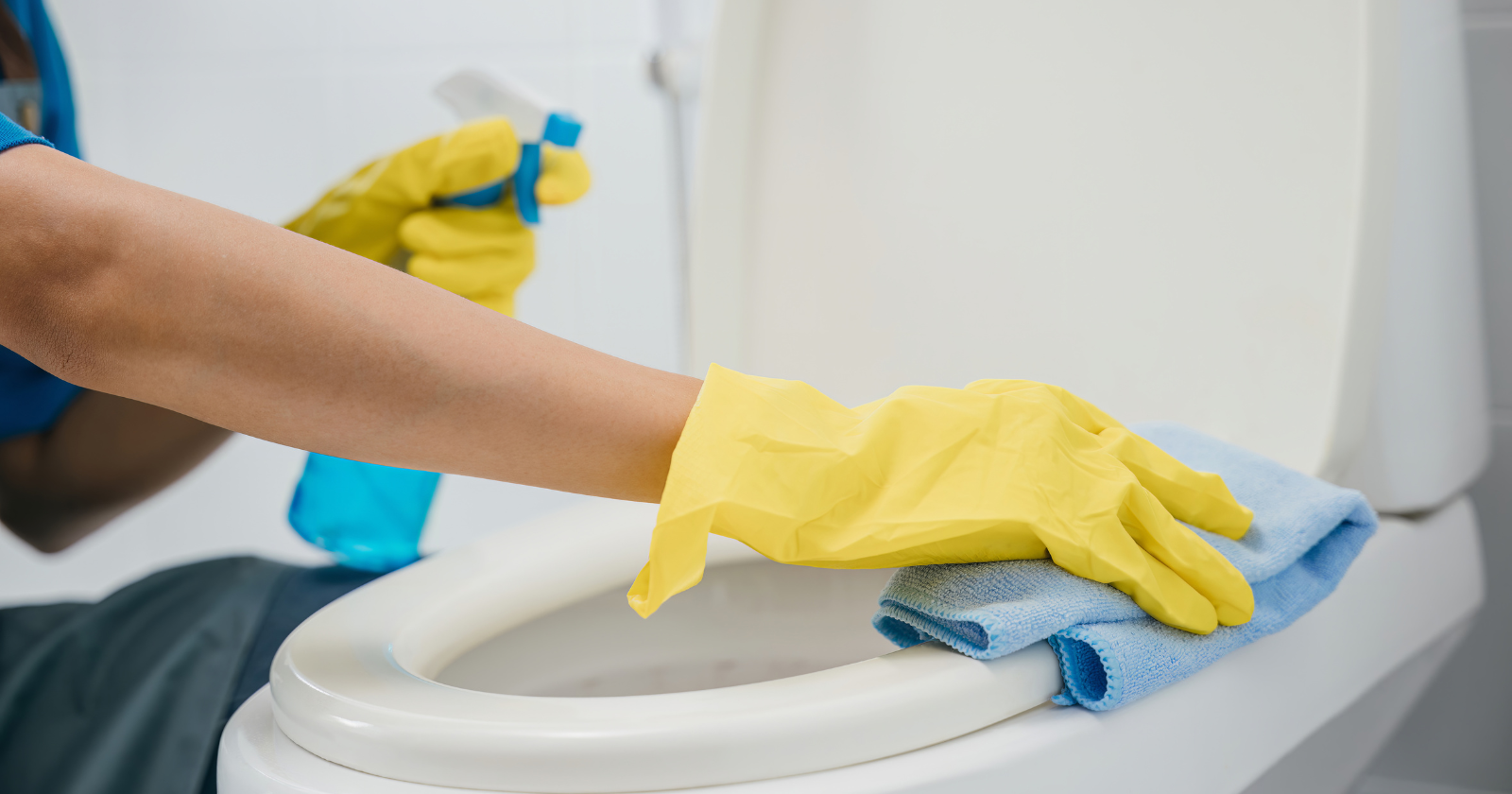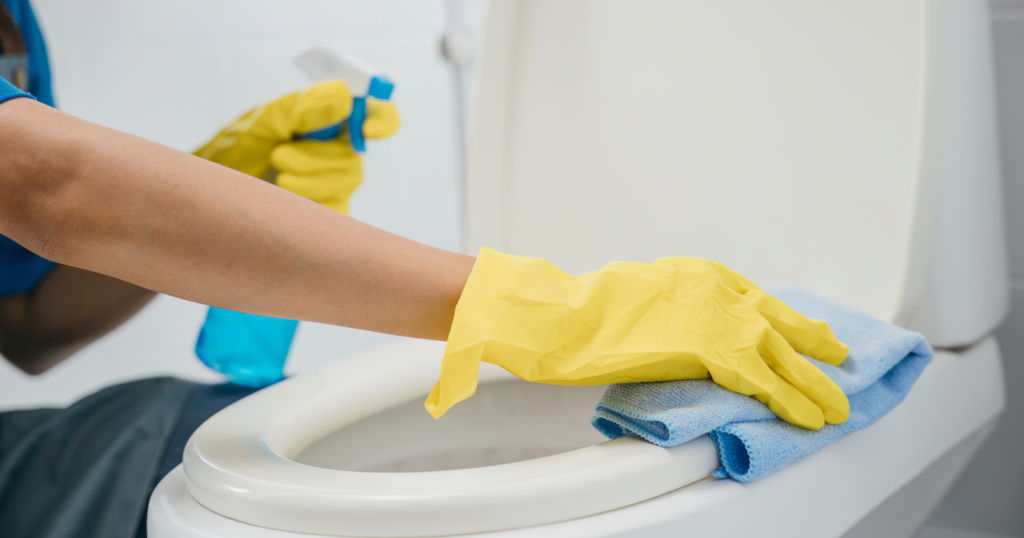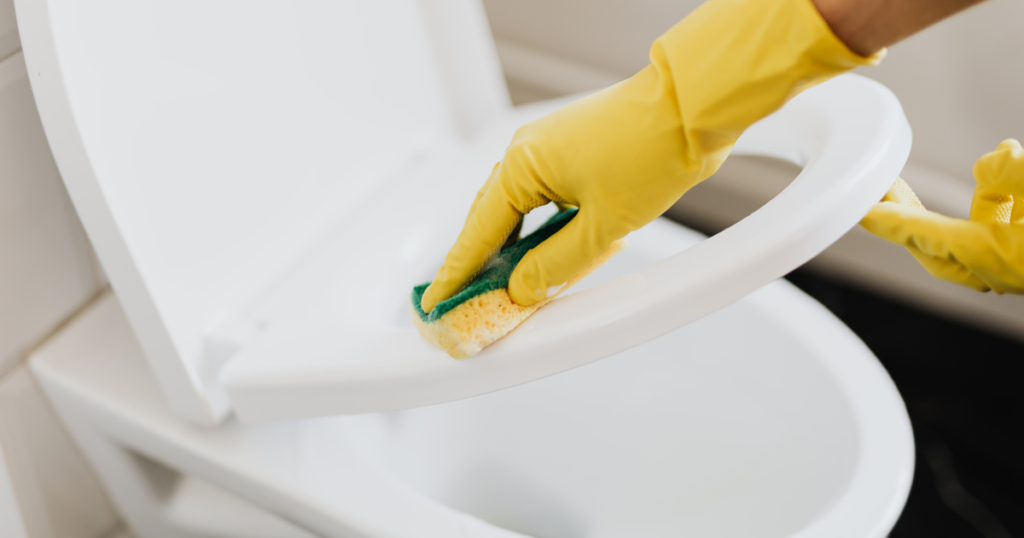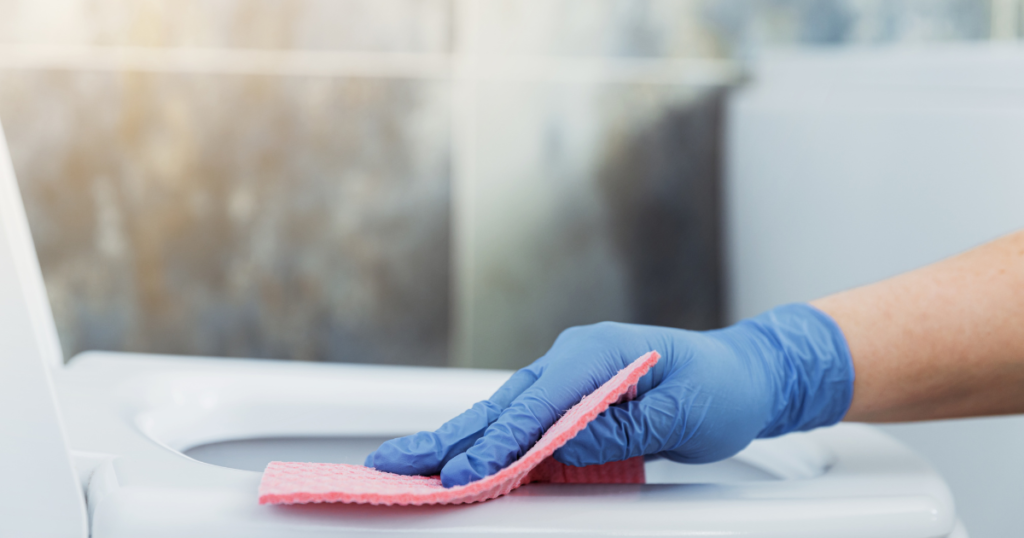
When it comes to maintaining a clean and hygienic bathroom, many wonder, Are toilet seats antibacterial? This question has become increasingly relevant as we strive to create healthier living environments.
This post will explore the science behind antibacterial toilet seats, examine their benefits, and help you understand if investing in one is worth it for your home. Let’s dive into the world of antibacterial toilet seats and discover what makes them a potentially game-changing addition to your bathroom hygiene routine.

Bottomline-Are Toilet Seats Antibacterial?
Definition and Functionality
Antibacterial toilet seats are crafted to reduce the spread of germs. These seats have an antimicrobial agent that actively kills or inhibits the growth of bacteria and other microorganisms. This makes them ideal for places with high traffic, such as public restrooms and hospitals.
The main functionality of these seats lies in their ability to create a cleaner environment. By killing germs on contact, they help maintain better hygiene with less need for constant cleaning.
Antibacterial Properties and Materials
The materials and treatments used make antibacterial toilet seats effective. Common materials include plastic infused with antimicrobial agents like silver ions. These agents disrupt the cell walls of bacteria and fungi, preventing them from multiplying.
Supralit® resin is another popular material known for its minimal porosity. This characteristic prevents impurities from accumulating on the seat surface, thereby enhancing hygiene. Some designs also incorporate additional treatments to reduce the presence of germs further.
Comparing Plastic and Wooden Toilet Seats
Plastic and wooden toilet seats have different hygiene properties. Antibacterial plastic toilet seats are generally more effective at inhibiting the growth of microorganisms. Plastic seats treated with antimicrobial agents can more efficiently resist bacteria, mold, and mildew.
Wooden toilet seats, while often more aesthetically pleasing, are more porous. This makes them harder to clean and more likely to harbor bacteria and other germs. Wooden seats can become a breeding ground for microorganisms without an antibacterial treatment.
Switching to an antibacterial plastic seat can provide greater peace of mind regarding hygiene. They are easier to maintain and offer higher protection against germs than their wooden counterparts.

Design, Comfort, and Durability Considerations
The design of a toilet seat affects its comfort and durability. High-quality materials, ergonomic features, and ease of maintenance are essential for choosing the correct toilet seat.
Ergonomics and Comfort Features
Comfort is a key factor when selecting a toilet seat. Ergonomic designs can enhance comfort by shaping the seat to fit the body’s natural curves. Features like contoured seats and more expansive seating areas provide better support. Some seats include additional padding for extra comfort.
Noise-free options, like slow-closing lids, prevent slamming and add to the quietness of the bathroom environment. Cushioned toilet seats can provide a softer seating experience, particularly for those seated more.
Color, Style, and Material Choices
Various styles and colors are available for toilet seats, allowing me to match the decor of any bathroom. Choices include traditional white, neutral tones, and even bold colors. The material of the seat also plays a big role in its look and durability.
High-gloss finishes, found in materials like enameled wood and certain plastics, offer a smooth and shiny appearance that is easy to clean. For example, half-Fold Disposable Toilet Seat Covers provide UV light resistance and a durable, attractive finish.
Durability and Maintenance
Durability is another important consideration. Seats from materials such as enameled wood, plastic, and veneer offer long-lasting use. Enameled wood provides a high-gloss finish that resists wear, chipping, and staining. Plastic toilet seats are lightweight yet firm, making them a practical choice for frequent use.
Regular maintenance is necessary to keep the seat looking new. Antibacterial surfaces can help simplify cleaning by reducing bacterial growth and promoting hygiene. For example, antibacterial toilet seats resist fading and maintain their color and finish over time, ensuring the bathroom remains clean and fresh.

Installation and Replacement of Toilet Seats
In this section, I will cover how to install and replace a toilet seat, the tools needed, helpful tips for easy replacement and cleaning, and the advanced features and upgrades some modern toilet seats offer.
Installation Process and Required Tools
Installing a toilet seat is a straightforward process that almost anyone can complete. You will need a screwdriver and pliers. First, remove the old seat by unscrewing the nuts and bolts that secure it to the bowl. The most common screws are metal or plastic, but some might have chrome hinges or other specialized parts.
After removing the old seat, clean the exposed area thoroughly. Make sure to dry it before placing the new seat. Align the new seat with the holes in the toilet bowl. Insert the bolts through the holes and tighten the nuts using your tools. The installation can be finished in minutes if done correctly and with the right tools.
Tips for Easy Replacement and Cleaning
When replacing a toilet seat, it is helpful to choose one with quick-release hinges. These hinges allow you to detach the seat easily for more thorough cleaning. Some of the best toilet seats feature this helpful functionality.
For a simpler installation, look for models with grip-tight bumpers. These bumpers keep the seat firmly in place, reducing movement and making cleaning easier. Wear gloves during the process to keep your hands clean, and use an anti-bacterial spray to sanitize the area after removing the old seat but before installing the new one.
Advanced Features and Upgrades
Modern toilet seats have several advanced features that enhance comfort and usability. Some seats include adjustable heat settings, which provide warmth during colder months. Others have a built-in bidet function, offering a more hygienic alternative to toilet paper.
Be sure to consider the type of hinges as well. Metal hinges offer durability, while some prefer the sleek look of chrome hinges. Upgrading to a seat with quick-release hinges can make future cleaning and replacement even more accessible.
Clorox Plastic Toilet Seat with Easy-Off Hinges
Antimicrobial Toilet Seat features built in properties that inhibit stain & odor causing bacteria.
Wrapping Up
The question: Are toilet seats antibacterial? Reveals an intriguing aspect of modern bathroom technology. While antibacterial toilet seats offer extra protection against germs, they are not a substitute for regular cleaning and good hygiene practices.
These seats can significantly reduce bacterial growth, providing peace of mind for those concerned about bathroom cleanliness.
As technology continues to evolve, we can expect even more advanced solutions. Whether or not you invest in an antibacterial toilet seat, staying informed and proactive about hygiene is critical to maintaining a healthy living environment.
Do antibacterial toilet seats eliminate the need for regular cleaning?
No, antibacterial toilet seats do not eliminate the need for regular cleaning. While they are designed to reduce bacterial growth, regular cleaning is still essential to maintain overall hygiene and prevent the buildup of other contaminants, such as dirt and grime.
Dive Deeper
- Kohler Quick Release Toilet Seat
- The Best Toilet Seat Surface for Cleaning
- When Was the Toilet Seat Invented?

